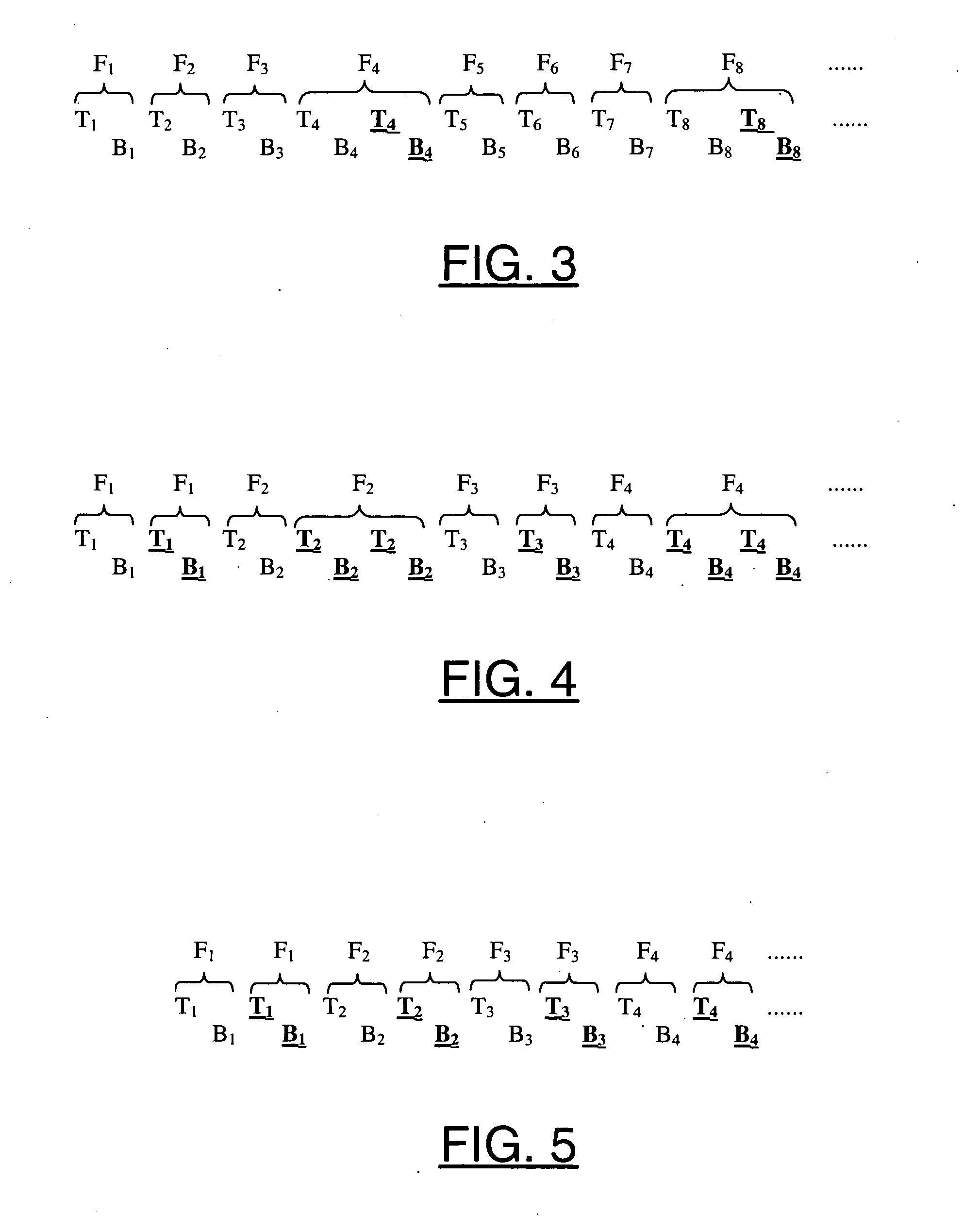Unified approach to film mode detection
a technology of unified approach and film mode detection, applied in the field of robust inverse telecine, can solve the problems of inability to reliably implement the conventional method, complicated detection problem, and inability to detect the film mod
- Summary
- Abstract
- Description
- Claims
- Application Information
AI Technical Summary
Benefits of technology
Problems solved by technology
Method used
Image
Examples
Embodiment Construction
[0021] The present invention generally combines an approach based on telecine patterns (e.g., pattern-based approaches) and an approach that does not utilize explicit telecine patterns (e.g., pattern-less approaches). In the pattern-based approach, a regular 3:2 pull-down pattern and one or more cartoon pull-down patterns may be considered.
[0022] In a first pattern-less approach, an existence of a particular pattern in a field sequence may be uncertain. Instead, knowledge of telecine patterns may be integrated into decision rules. Examples of such knowledge about telecine patterns include, but are not limited to, (i) a minimum number and a maximum number of repeated fields over a window of a certain number of fields and (ii) a minimum number and a maximum number of non-repeated fields over a window of a certain number of fields.
[0023] In a second pattern-less approach, the candidacy of the field to be a repeated field may be determined. The candidacy may be based on (i) a sum of a...
PUM
 Login to View More
Login to View More Abstract
Description
Claims
Application Information
 Login to View More
Login to View More - R&D
- Intellectual Property
- Life Sciences
- Materials
- Tech Scout
- Unparalleled Data Quality
- Higher Quality Content
- 60% Fewer Hallucinations
Browse by: Latest US Patents, China's latest patents, Technical Efficacy Thesaurus, Application Domain, Technology Topic, Popular Technical Reports.
© 2025 PatSnap. All rights reserved.Legal|Privacy policy|Modern Slavery Act Transparency Statement|Sitemap|About US| Contact US: help@patsnap.com



